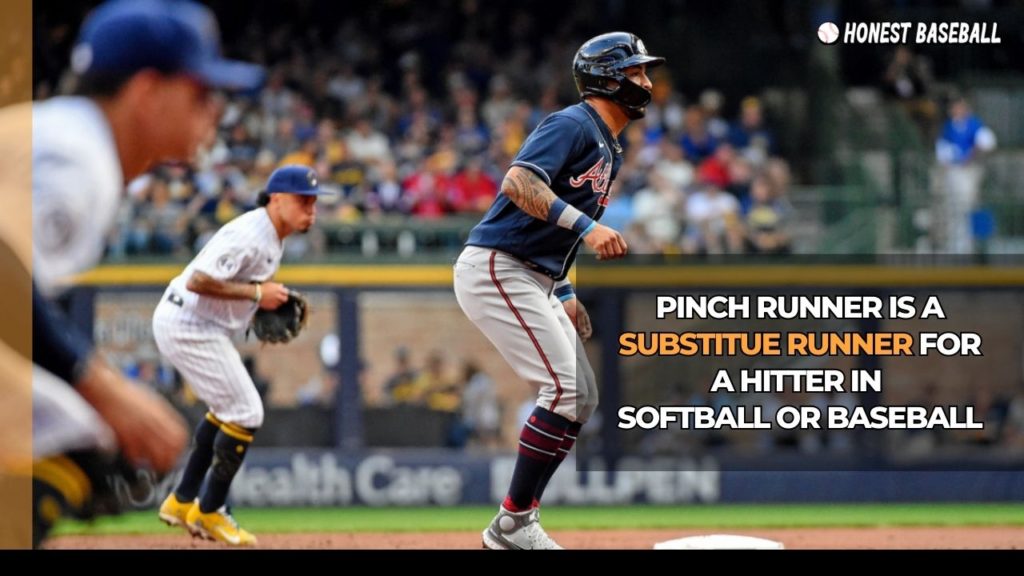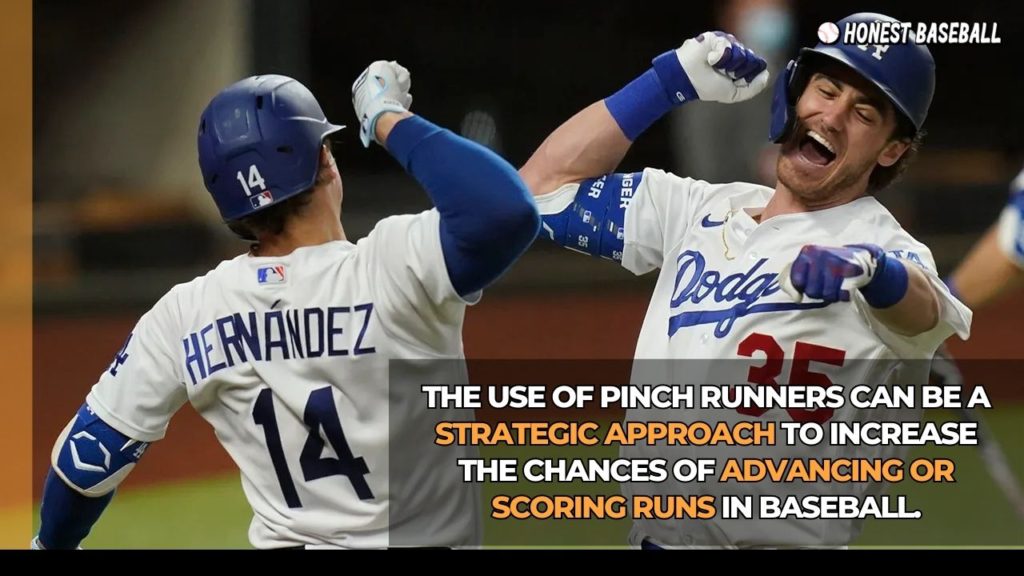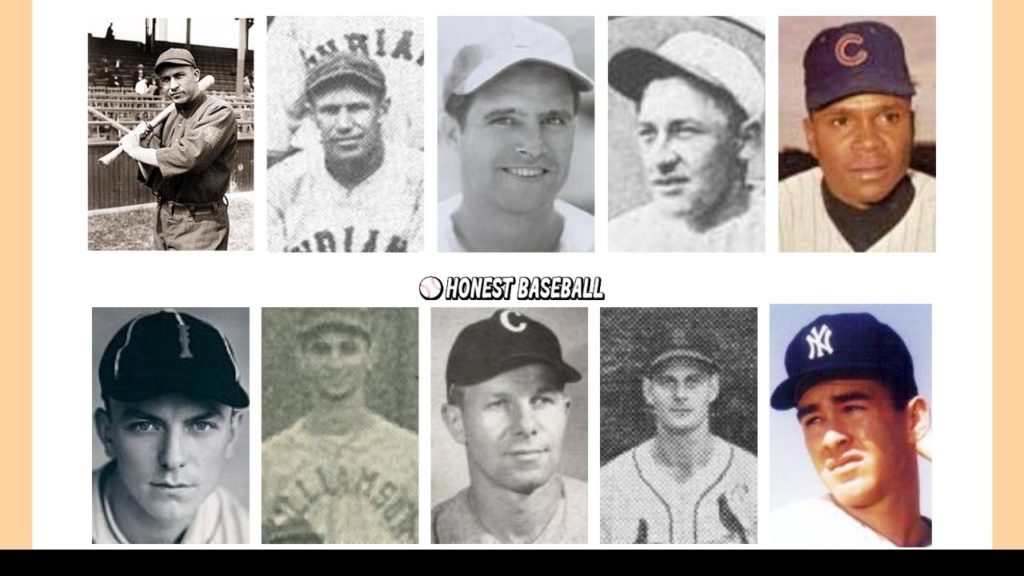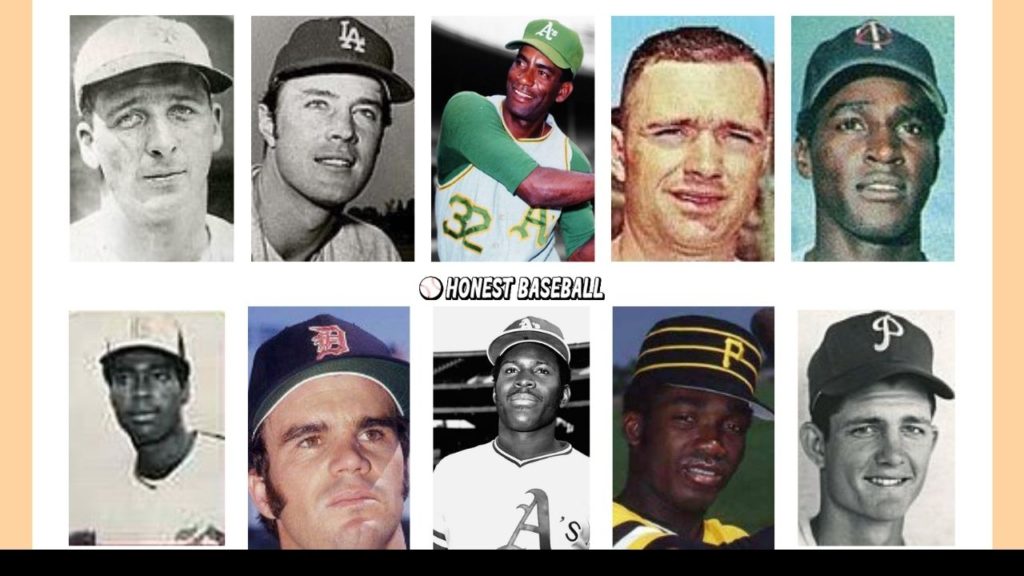Pinch Runner is a substitute player in baseball and softball. This fellow enters the game specifically to run on behalf of a hitter (can be a designated hitter also.)
Typically people think pinch runners are used for mainly injured players. If you ask beginners or parents “What is a pinch runner,” most will answer the same.
However, the practical sports scene in baseball is too different, at least that’s what I found after delving into the history of baseball since 1913!
As the main requirement to become hired as a pinch runner is only to become a speedster in running, newbies may fall into this trap and join the league.
Wondering why being a baseball coach I’m considering this a lure? Check out the fallen stars in this article, you’ll get the idea.
Key Takeaways:
- Pinch runners aren’t only allowed or used for injured players. But they are also considered a tactical approach in the serious moment of a game.
- Matt Alexander holds the all-time MLB record for the highest number of appearances as a pinch runner, with an impressive 271 appearances in total.
- The average salary of a pitch runner is less than $40,000 a year.
Why Is It Called A Pinch Runner?

In sports, pinch basically means jumping into a game at a crucial moment when additional support is required for any of the field players.
Following the terms, different pinch role plays were introduced in the world of diverse sports. And the same happened in baseball too. Pinch Runner is one of them.
It refers to a substitute player who enters the game specifically to run the bases on behalf of a hitter or any of the base runners. Not only in baseball, it’s also widely practiced in softball.
The fun fact is it’s actually a mirror concept of the “Pinch Hitter.” Like the pinch runner, a pinch hitter supports an injured batter, thus called a substitute batter.
There are other reasons why teams invite a pinch runner to join the game also. For instance, teams can ask for pinch runners, if
- It’s a double switch.
- It’s an ejection or the original player is removed from the game due to violating any rule.
- The original player is injured during play.
So, it’s not like the pinch runner replaces the player. Sometimes, the pinch runner is way faster or just better at running bases than the player they subbed out.
This strategy allows an offensive team to capitalize on a specialized batter’s skills or adjust their lineup based on the game situation.
If you dig into the history of Major League Baseball, you’ll find how important it is to have a pinch runner to maintain the team’s momentum, execute strategic plays, and ensure that the game flows smoothly.
Why Are Pinch Runners Allowed in Baseball and Softball?

As mentioned earlier, pinch running is allowed to provide rest to an in-game or lineup player who faced injury or there’s a probability of making it severe if he continues running.
However, MLB doesn’t limit the use of pinch runners to injuries only. If a base player needs rest or is dealing with minor ailments, the manager can use a substitute runner for the player also.
Don’t compare this substitute runner to what you see in other sports. They are used in baseball more like a strategic approach compared to a need for an offensive team.
MLB and Minor League teams actually selectively acquire players for pinch-running. The primary traits to be on the list is to have exceptional speed and baserunning abilities.
With these skills, teams can take advantage of their quickness and increase their chances of advancing or scoring runs.
As an offensive strategy, pinch runners are frequently used in crucial game situations. This tactical substitution allows the manager to take back control of the score sheet.
For example, sometimes teams replace a slower baserunner with a faster pinch runner late in the game to increase the likelihood of scoring runs.
Pinch Runner Rules – Official Major League Baseball Rules 2021
According to the official MLB rules of 2021, there are certain restrictions and guidance players and managers should obey in order to onboard pinch runners in a game.
However, the MLB disclosures are a bit complex to digest for beginners and kids, so I simplified it for you.
Rule 5.05 (b) (1): Pinch Runners Can Be Tagged Out
There’s a comment on 5.05 (b) (1), which states that a substitute runner or pinch runner should
- Gets a walk (a base on balls), and they need to touch first base before other runners are forced to move.
- If a runner slides past the base without touching it, they can be tagged out by the fielder.
- Also, if a runner misses a base they should touch and tries to keep running, they can be tagged out or the missed base can be tagged.
Rule 5.10 (e): Listed Batters Can’t Play As a Pinch Runner
In MLB, players who’re not in the lineup can be used as substitute runners. But,
- Players who’ve already listed in the batting order cannot participate as a pinch runner for another teammate even if he has been taken out from the game.
This rule is to stop the use of “courtesy runners” and make the game fair.
Rule no: 5.11 (a) (6): Pinch Runners Are Allowed for Designated Hitters Also
You already have heard about the pinch hitter, who’s also called designated hitter (a substitute hitter on behalf of another hitter.) According to 5.11 (a) (6) section,
- A designated hitter can use a pinch or designated runner to advance or score runs.
“BTW, the same section also states that a pinch hitter isn’t allowed to participate as a pinch runner. “
Rule 5.12 (b) (3) (A): Injured Players Can Call for a Pinch Runner
The basic guidance for pinch runners in baseball says,
- If a player gets hurt during the game and can’t continue running to the base, a substitute runner can come in to finish the play.
For example, if a player hits a home run out of the field, but gets hurt while rounding the bases, another player can run in their place.
Rule 9.03 (b): Official Score Report (Additional Rules)
Major League Baseball keeps the record of substitute batters and runners separately in their official score report.
They use special symbols to show who replaced whom to maintain a clear record of the game and plays. The same should be followed by other events.
Rule no: 9.23 (c): Guidelines for Cumulative Performance Records:
It’s also known as MLB rules for consecutive-game playing streaks. Basically, this one says, to keep a long streak of playing games going, a player needs to play at least one half-inning on defense or complete a turn at bat by either reaching a base or getting put out.
In addition, the subsection (c) of the same rule mentioned that,
- Just coming in as a pinch runner doesn’t count to continue the streak.
- If a player gets ejected from a game before meeting these requirements, their streak will still count.
Famous 20 Pinch Runners Recognized in the History of Baseball

Pinch runner isn’t a modern term. Clifford Blau wrote in his journal “Leg Men: Career Pinch-Runners in Major-League Baseball” that the first recognized pinch-runner was Wilson Collins in 1913. He debuted as a pinch runner for the Boston Braves.
If till now, you were wondering it’s not a notable role in baseball, you may need to think again. You would be amazed to know that there are lots of players who passed half of their career time as contracted pinch runner.
For example, Sandy Piez was the first officially signed Major League Baseball player by the New York Giants to primarily serve as a pinch-runner in his career.
Piez’s role was to enter the game specifically for running purposes and didn’t participate in other aspects of the game.
Another notable pinch runner was Edward Francis Hock who served 10 matches out of 16 total MLB appearances. Some more pinchers are:
| Player Name | Team Name | Participated in Games as a Pinch Runner | Year |
| Horace l. (Pip) Koehler | San Francisco Giants | 30 games | 1925 and 1926 |
| Herman Layne | Pittsburgh Pirates | 8 | 1927 |
| Dinny McNamara | Boston Braves | 13 | 1927 and 1928 |
| Robert Wayne Kahle | Boston Bees | 5 | 1938 |
| Patrick Nicholas Capri | Boston Braves | 6 | 1944 |
| Joe Tepsic | Brooklyn Dodgers and Montreal Royals | 10+ (Royal’s match count wasn’t found) | 1946 and 1948 |
| Jack Dempsey Cassini | Pittsburgh Pirates | 8 | 1948 |
| Howard Edward Phillips | St. Louis Cardinals | 9 | 1953 |
| Tommy Carroll | New York Yankees and Kansas City Athletics | 33 | 1955 to 1959 |
| Mack Edwin Burk | Philadelphia Phillies | 13 | 1956 and 1958 |
| Don Eaddy | Chicago Cubs | 14 | 1959 |
| Roy Gleason | Oakland Athletics | 22 | 1963 |
| Allan Lewis | Oakland Athletics | 28 | 1967 |
| Donald Allen Wallace | California Angels | 14 | 1967 |
| Herman Hill | Minnesota Twins | 13 | 1969 and 1970 |
| John Robert Gamble Jr | Detroit Tigers | 4 | 1972 and 1973 |
| Matt Alexander | Chicago Cubs, Oakland Athletics, Pittsburgh Pirates | 271 | 1973–1974,1975–1977,1978–1981 |
| Don Hopkins | Oakland Athletics | 75 | 1975 |
| Darrell Lee Woodard | Oakland Athletics | 22 | 1978 |
| Alberto Lois | Pittsburgh Pirates | 11 | 1978 and 1979 |

Courtesy Runner Vs. Pinch Runner – What’re the Differences?
Just like the pinch runner, “Courtesy Runner” is another common baseball terminology. And newbies often get confused thinking that both are the same. However, they aren’t!
In a nutshell, a courtesy runner is used to assist a player who has difficulty running due to injury or physical limitations.
On the flip side, pinch runner is substituted specifically for their running abilities, regardless of the player’s physical condition.
To understand the differences, check out the below table:
| Differentiation Factors | Courtesy Runner | Pinch Runner |
| Purpose | To replace a player with an injury or limitations | To utilize speed or base running skills |
| Typical Usage | Used for injured or limited players | Used strategically for running advantage |
| Substituted Player’s State | Often due to injury or physical limitations | May or may not have any physical limitations |
| Base Stealing | Typically not focused on stealing bases | May be used for stealing bases and creating runs |
| Position | Can be used for any position on the field | Usually used for positions with slower baserunners |
| Strategy | Primarily for player well-being | Primarily for offensive advantage |
| Frequency | Occurs infrequently | Can occur more frequently depending on the game |
Frequently Asked Questions
Why would you use a pinch runner?
From my experience, whenever a player on the batting order isn’t fast enough in speed, he or she should use a pinch runner. Sometimes, a batter can score good hits but can’t advance as fast as they should. The reason can be even the overweight of the baseball players also.
Does a pinch runner get credit for a run?
If a pinch runner advances the home plate or any of the designated bases, he’s credited for a run. MLB keeps these scores separately from the batter for the runner.
Can a pinch runner hit?
Unlike pinch hitters, pinch runners aren’t allowed to hit in baseball. Their contribution is limited to running scores only.
What’s the average pinch runner’s salary?
According to a Reddit post, pinch runners usually just get the base salary. However, I found a Glassdoor report that estimates the total pay for a Runner is $35,508 per year in the United States area, with an average salary of $33,349 per year.
How many pinch runners are allowed per game?
There’s no limit or restriction mentioned in the MLB rulebook on the number of pinch runners that can be used in a single game.
Does the pinch runner replace the player?
Well, a pinch runner replaces the running ability of a batter. However, they don’t completely replace the substituted player.
Wrapping Up
So, from the above discussion, you understood what a pinch runner is. Though the primary purpose is to substitute a slower baserunner or hitter with a faster runner, there can be some other strategic approaches also.
However, one thing should be noted that being a pinch runner doesn’t guarantee a successful baseball career. Because history says most pinch runners were able to last in the MLB only for a single season. And their pricing was not more than $40,000.
So, it’s good to have a pinch-running speed but you should focus on primary other skills also.
If you want to get help regarding improving your baseball skills, check out the below articles:
7 Youth Baseball Hitting Drills – Hit To Stars Like A Pro!
Baseball Drills For 10-Year-Olds- The Rulebook
4 Drills for Learning Home Runs

Hello everyone. My name is Jason Butler, and I live in California, America. I was a professional AAA Minor League Baseball player. I lost my chance of playing MLB for injury issues, but I did not lose my love for baseball. I attended the coaching training program and am now working as a coach in a small school in San Diego.
I always love to share my experience and knowledge if that can help you. Play baseball, and stay fit.
